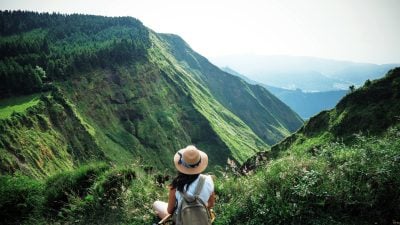Home / UK & Europe / Explore Lesser Known Highlight…
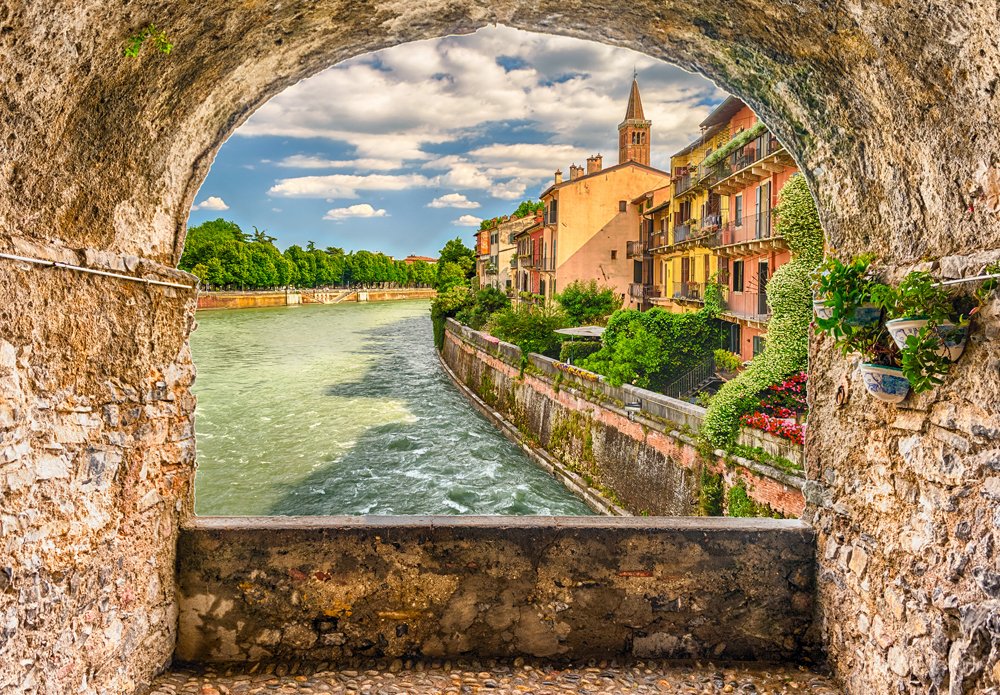
Explore Lesser Known Highlights on Your Trip to Italy
Italy is a destination which is brimming with other possibilities after having spent time in Rome, Florence, and Venice. Discover what else a trip to Italy has to offer.
As a destination, it is almost impossible on trips to Italy not to find a region or city which will give the average traveller pleasure. I have selected just a few special places which I recommend for an enjoyable experience. A bonus could be that you will avoid the huge crowds that flock to the better-known centres, and have a wonderful time.
Verona – Province of Veneto
Possibly the first thing you think about when Verona comes to mind is the Shakespeare play, Romeo and Juliet. Well, Shakespeare chose Verona as the setting for this play. So, you will be drawn to the house and the balcony where the wooing took place, but don’t spend too much time on this less than awe-inspiring site. There is too much else to marvel at. Because Verona is an ancient city even containing relics from Roman times, it is essential to walk around the narrow attractive winding streets and soak up the atmosphere. The city is crammed with museums, churches, Roman ruins, fabulous outdoor restaurants, bars, and cafes.
The heart of the city is La Piazza delle Erbe, the main square which is surrounded by gorgeous Medieval and Renaissance architecture. This is the perfect place to spend time over a coffee. One of the big attractions is the open-air Roman amphitheatre which is where, in the summer, you can attend performances of mainly opera but also ballet and concerts, all of high quality. This amphitheatre is 2000 years old and seats 30,000 people. The Castelvecchio is a medieval fortress on the banks of the River Adige, built in the 14th century. The Museo di Castelvecchio there contains collections of art, frescoes, glassware, and jewellery.
Other attractions on your Italy vacation are the Torre dei Lamberti, an 84 metre/275 feet high watchtower from the top of which you can have panoramic views of the city and the nearby mountains, and the Basilica di San Zeno, a church built in the 12th century containing stained glass windows, Renaissance frescoes, and crafted bronze doors. Last but not least is the Giardino Giusti, a beautiful 16th-century garden full of lemon and cypress trees.
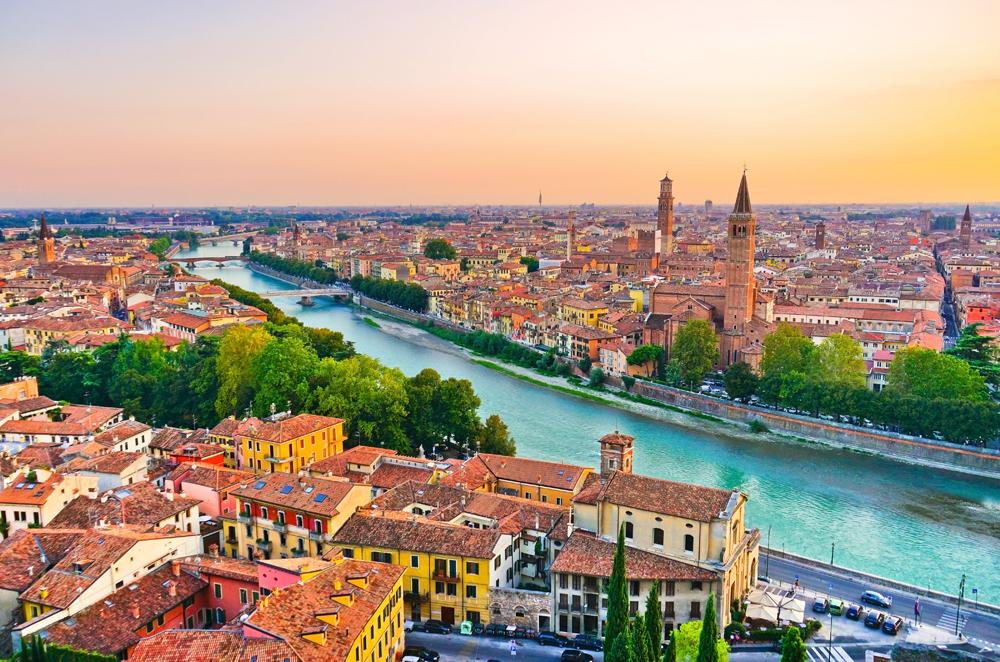
Ravenna – Province of Emilia-Romagna
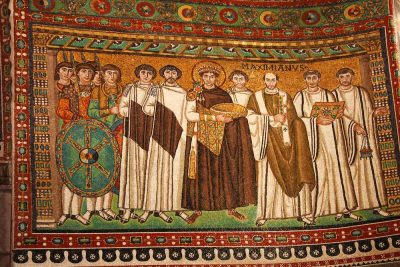
Most people visit Ravenna on a trip to Italy because of its art treasures, but more specifically, its mosaics, which have given the city UNESCO World Heritage recognition. Ravenna was important as the capital of the Western Roman Empire between the 5th and 8th century AD. There are 8 buildings which are UNESCO World Heritage sites and include churches, museums, and mausoleums. The most important venues to view the famous mosaics are the Galla Placidia Mausoleum, the Arian Baptistery, and the Church of San Vitale. It should be emphasized that these art treasures date back to early Christian times. Galla Placidia was the daughter, sister, wife, and mother of Roman emperors. She had this mausoleum built in the 5th century. The interior is exceptional and the mosaics are some of the oldest in the city. The dome of the Arian Baptistery is decorated with beautiful mosaics. The Basilica di San Vitale (Church of San Vitale) is one of Italy’s most important monuments of early Christian art. The Basilica has an elegant cupola and the 6th-century mosaics are stunning. For more information on the mosaics, head to Tutta l’Avventura del Mosaico, a museum known as TAMO, which focuses on the archaeological aspects of the mosaics as well as having displays of excavations from Roman and Byzantine sites.
The centre of the town is around Piazza del Popolo, an attractive square surrounded by impressive 15th-century buildings. It is suggested to wander through the streets that lead off from the square and find yourself immersed in olden times. Every year, Ravenna hosts a festival in June and July featuring top performers and orchestral conductors. The month of September is devoted to the poet, Dante, who was born here with many cultural events.
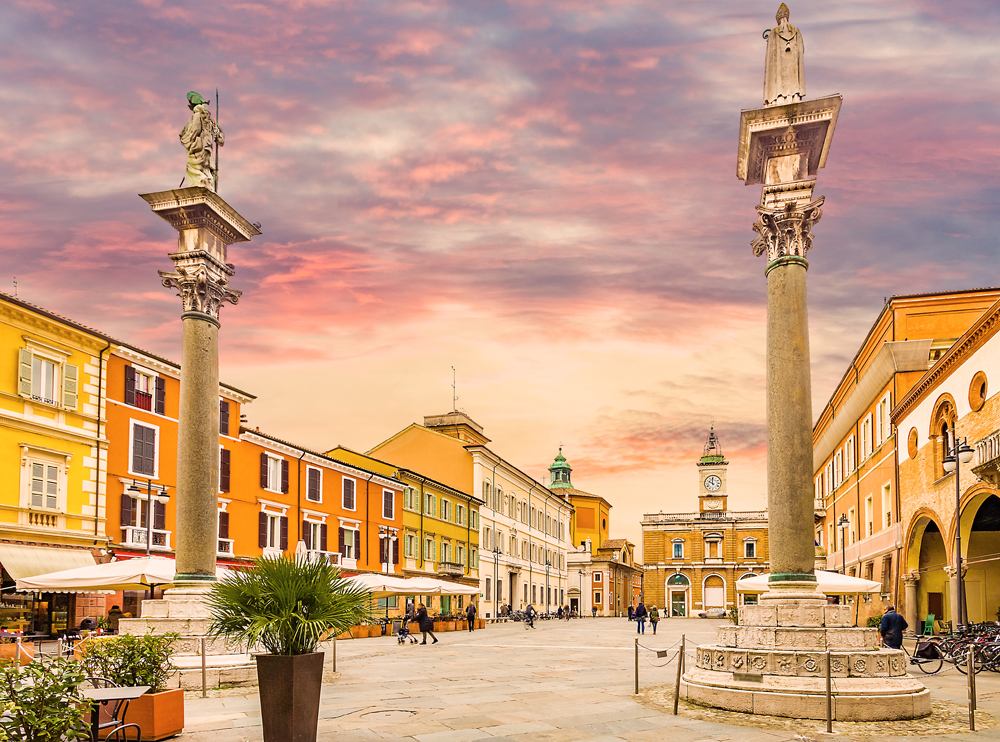
Lucca – Tuscany Province
The province of Tuscany has many gems and it could be very difficult to select just one place to visit on Italy vacations (possibly after Florence, Siena, and Pisa). If you choose Lucca, you will have a big surprise. It is a place to experience stepping back in time. The first thing you notice about Lucca is the city wall (designed by none other than Leonardo da Vinci and built in the 16th century) which is in excellent shape considering its age. You can walk on the promenade on top of the wall all around the perimeter. Totally, it is 4 kilometres/2.4 miles in length. Walking around the centre of Lucca is easy as most streets are pedestrian-only. Just don’t get lost in the labyrinth of narrow streets. You can check out the Roman amphitheatre in the Piazza dell’Anfiteatro and the Lucca Cathedral, with its marvellous Romanesque facade of arches and carved columns, and its tall campanile. Another site worth visiting is the Palazzo Pfanner, a beautiful 17th-century palace with an ornamental pond, a lemon house, and 18th-century statues of Greek gods. In the summertime, chamber music concerts hosted here are excellent.
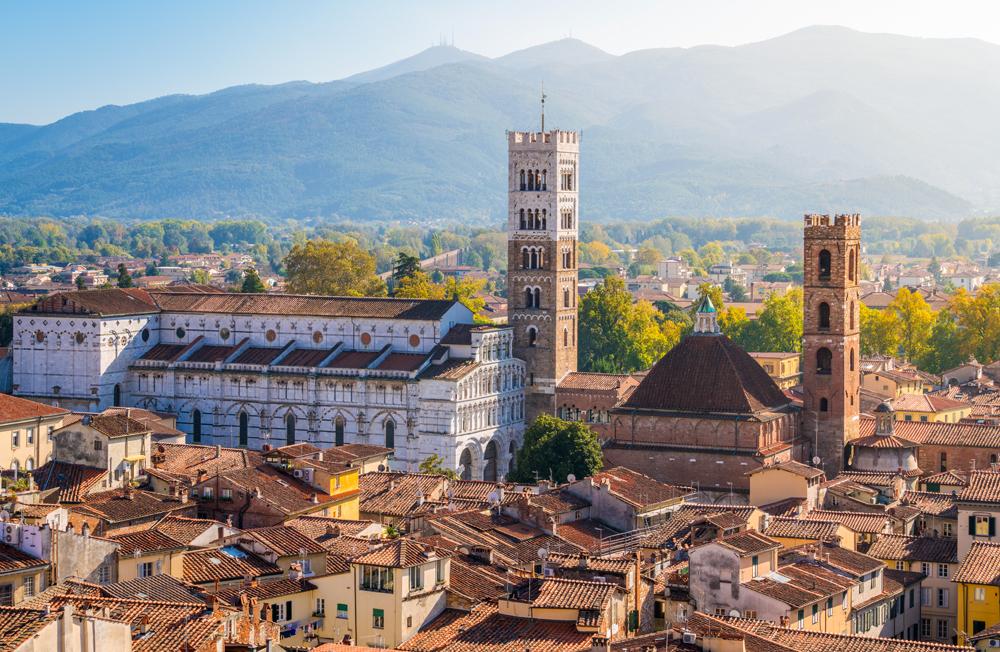
Bologna – Emilia-Romagna Province
It is not often I would begin an article on a city and start with its culinary attractions. Well, Bologna is a foodie’s place for sure. Everyone has heard of Spaghetti Bolognese, although just like the fact that Danish pastries are not called that in Denmark, you won’t find this dish called by the name we know and love. Because the locals take their food seriously, you can’t go far wrong wherever you choose to eat. So now you need to walk off some of that food. The easiest way to get around Bologna is on foot, an enjoyable way to see the city on a trip to Italy. If you can imagine, Bologna is known for its medieval porticos or covered arcades which extend over 36 kilometres/24 miles around the historical centre. The porticos are all numbered going up to 666.
The heart of Bologna is the Piazza Maggiore, a large square with medieval buildings on all sides. This includes the main cathedral, the Basilica di San Petronio, and the City Hall. Forget the tower of Pisa; head to the twin towers of Garisenda and Asinelli. The former leans even more than its counterpart in Pisa. Climb the latter for a great panoramic view of Bologna. One more enjoyable place to visit is the Quadrilatero, the oldest market in the city close to the main square. As you stroll through the narrow streets here, you will do well to sit at one of the cafes and take in the typical Bolognese ambience.
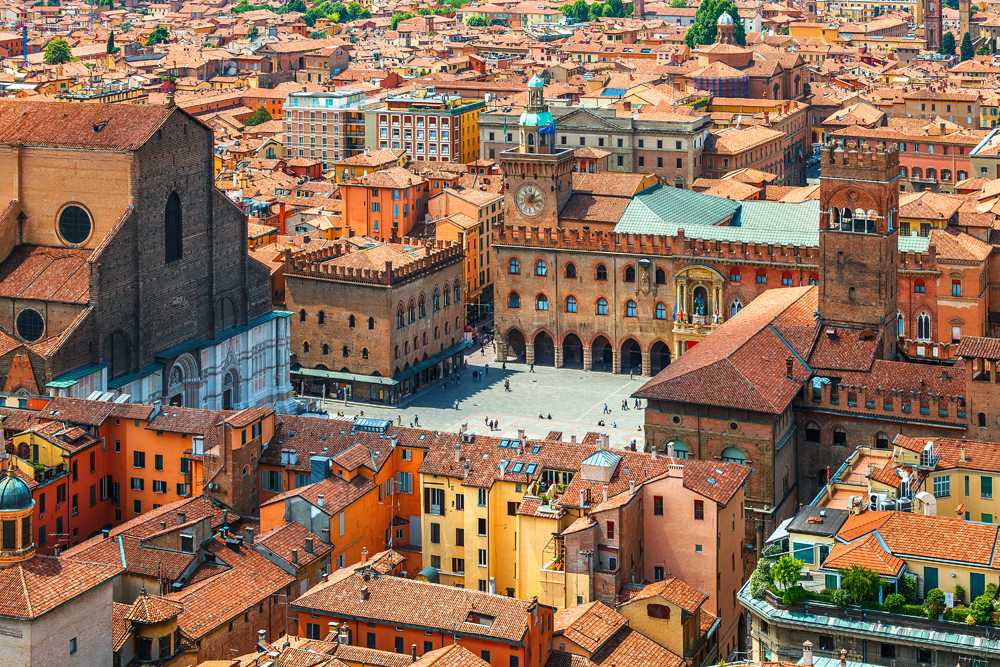
Perugia – Umbria Province
Perugia is the capital of the province and offers a historical centre full of piazzas, cobblestone alleyways, and mansions. It also has a long history involving the Etruscan, Medieval, and Gothic eras. The heart of Perugia is the Piazza IV Novembre, the main square of the city. It contains many beautiful historical buildings which include the impressive Cathedral of Perugia which was built in the 16th century and contains the tomb of Pope Martin IV (1210 to 1285), the Priory Palace which can be visited and contains some colourful frescoes depicting biblical scenes, and the Maggiore Fountain which features a series of ornate statues. Other points of interest are the Arco Etrusco, the city’s ancient Etruscan gates dating back to the 3rd century BC, and the Musica (music museum) in the Torre del Cassero which features old musical instruments and concerts. Just outside of the city is Lago Trasimeno, an extensive lake with small islands and waterside towns. You can take a cruise around the lake. Perugia is famous for the Umbria Jazz Festival, one of the most important jazz festivals in the world, and has been held annually since 1973, usually in July. Almost every name jazz musician has performed here at some time. Then there is the annual chocolate festival in October called EuroChocolate which attracts close to 1 million people and lasts for 9 days each year. Activities include art displays, tastings, street performances, and chocolate sculpting.

Assisi – Umbria Province
Not far from Perugia is the town of Assisi and known for St Francis (1181 – 1226), founder of the Franciscan order of the Catholic Church who lived here and is remembered for his generosity to the poor. As you approach Assisi, you have to be charmed by the sight of this small town perched on the top of a hill. The first place you will probably head for is the Basilica of St. Francis of Assisi. It is one of the most important places of Christian pilgrimage in Italy and is a UNESCO World Heritage site. Originally built in 1228 AD, it is decorated with frescoes, and in the crypt are the remains of St. Francis. The Temple of Minerva is an ancient Roman building. It houses a church, the Santa Maria Sopra Minerva, which contains some excellent paintings and frescos. The Rocca Maggiore, a medieval fort, is located just outside the town up on a hill where you can enjoy amazing scenic views, not only of Assisi but the surrounding area. The sunset from here is stunning.
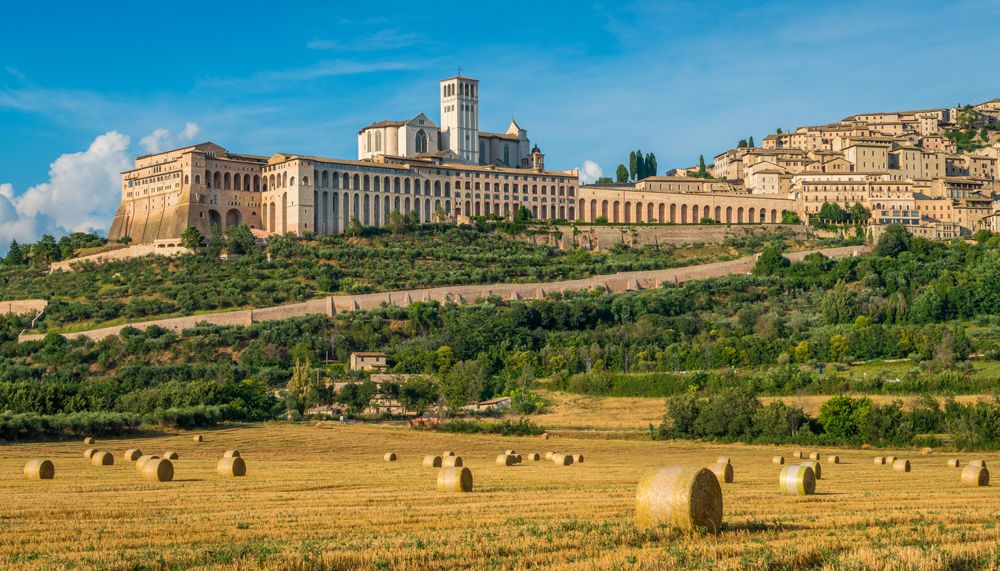
Trieste – Province of Friuli-Venezia-Giulia
Is Trieste typically Italian? No, as the city has been influenced by many different cultures. It has been part of the Austro-Hungarian Empire, occupied by the Germans, and has belonged to Yugoslavia. It eventually returned to Italy as recently as 1954. These influences are reflected in the daily life of its inhabitants, its architecture, traditions, and cuisine. Geographically, it is surrounded by Slovenia. Trieste is a city of amazing architecture and beautiful old buildings. It is also a seaport.
The best way to explore the city on a trip to Italy is on foot. Start with the elegant Piazza dell’Unita d’Italia, Italy’s largest sea-facing square. It contains the Palazzo del Municipio, the 19th-century city hall. Trieste’s number one attraction is the Miramare Castle which sits on a rocky promontory outside the centre of the city. It was the home of Archduke Maximilian of Austria who was the commander of Austria’s Imperial Navy in the mid 1800s. Architecturally, it is a mix of Gothic, Medieval, and Renaissance styles. You can visit the rooms of the castle as well as the extensive gardens.
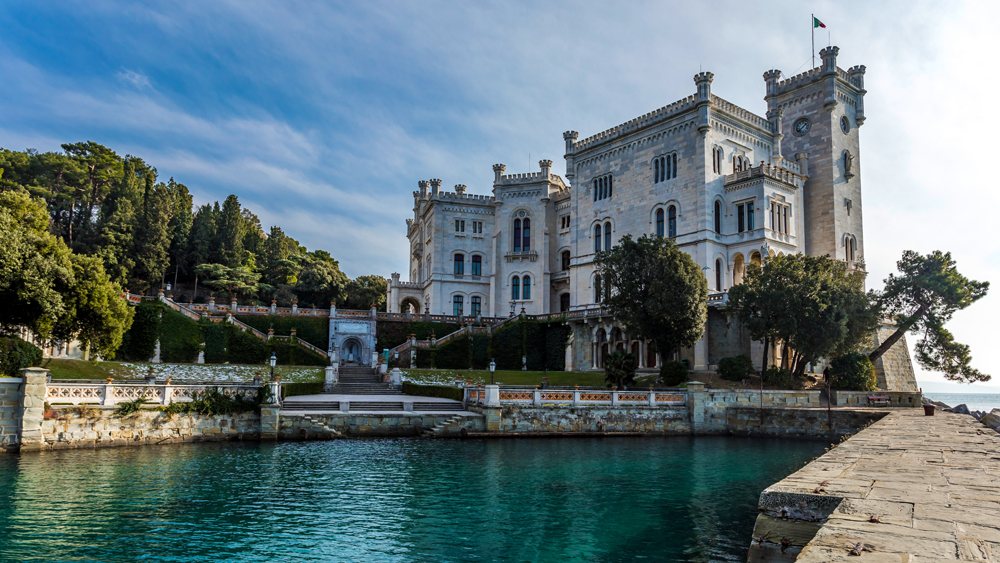
Another landmark is the Carso Triestino, which is a plateau on top of a rocky promontory which looks like a lunar landscape containing caves and sinkholes. One cave called Grotta Gigante is the largest in the world and is awe-inspiring to visit on an Italy vacation. Two other points of interest about Trieste; one is its coffee. It is the home of Illy Coffee, Italy’s best-known brand of which the locals are very proud. Try it and compare it to coffee taken in other places. The other is its cuisine which reflects the various cultures and traditions of immigrants from neighbouring countries over time. Fish dishes are the highlight of this culinary scene.

Get more travel inspiration by email.
Subscribe
0 Comments

Get the latest travel trends & hear about the best deals on vacations around the world.
If you’re a Globetrotter, these are the newsletters for you!

